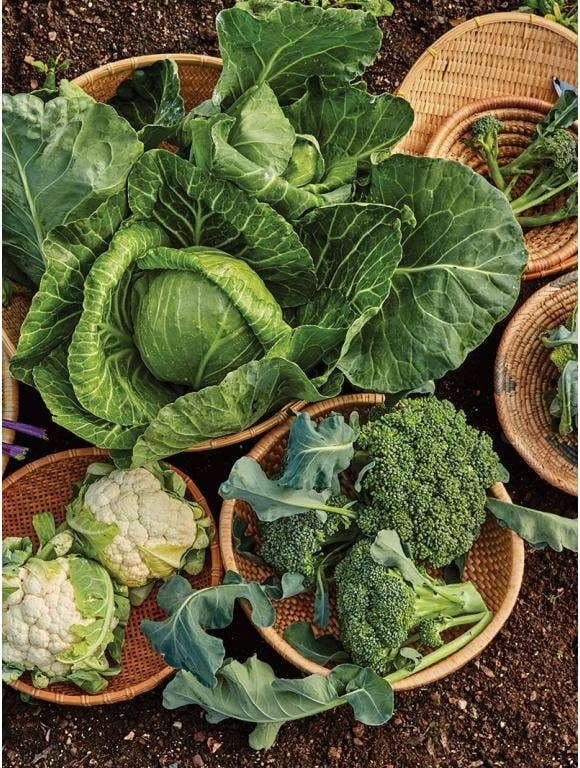

When gardeners start thinking about growing vegetables their first thoughts are beans, tomatoes and peppers. Seedlings of both peppers and tomatoes are tempting when we see them on the store shelves, and are a great way to get fresh tomatoes all summer, but home grown vegetables can start much earlier than the end of spring if you grow winter vegetables that do better in cool weather. Cool temperatures in spring have fewer pests around to bother your cool season vegetables which means they are less prone to damage and other problems. The best cool weather vegetables include salad vegetables, kales, chards, onions and the cabbage family as they are more tolerant of colder temperatures and light frost.
Just like the warm weather vegetables, most winter vegetable varieties are started from seed indoors. This is timed to put the seedlings into the garden about two months before the last frost arrives. Warm the soil with a plastic cover before you plant the seedlings, or use a cold frame to protect them from spring winds and late cold spells.
Winter Vegetables
The Cabbage Family: This includes cabbages, broccoli, cauliflower and kales which all produce white or yellow flowers when the plant goes to seed. They germinate in about a week and can be placed into a protected garden bed about a month before your last frost date. If the weather is still cool, add a row cover or cloche to the plants to keep them warm. In warm areas you can grow these vegetables in your fall garden too. Transplant the seedlings and put them into the garden in September, and protect from hot afternoon sun. Warm summer soil combined with cooler fall temperatures help the seedlings to settle quickly and a second crop is produced about 60 days later. Have a frost protection cloth ready in case an early frost occurs.
 The Onion Family: Onions, shallots and leeks are the main members or this group and they take a long time to mature. Onion and shallot sets can be put into the garden about a month before your last frost date, as well as seeded in the garden for a fall crop. They can also be planted in fall to emerge late winter for an early spring harvest.
The Onion Family: Onions, shallots and leeks are the main members or this group and they take a long time to mature. Onion and shallot sets can be put into the garden about a month before your last frost date, as well as seeded in the garden for a fall crop. They can also be planted in fall to emerge late winter for an early spring harvest.
Salad Vegetables: There are numerous varieties of cool weather lettuce and mesclun mixes that thrive in spring gardens. Spicy mustards and colorful greens can all be started indoors about 2 months before the last frost. Put the seedlings out about a month before the last frost and cover with a cloth on cool nights. Seeds can also be sown for a longer harvest. Try planting some seeds in late summer too for a fall harvest.
Most of the cool weather vegetables can tolerate a light frost, but keep a cloth handy for sudden cold days and late frosts. Extending the season with winter vegetables will keep your dinner table full of fresh, nutritious vegetables for at least a few weeks longer.



